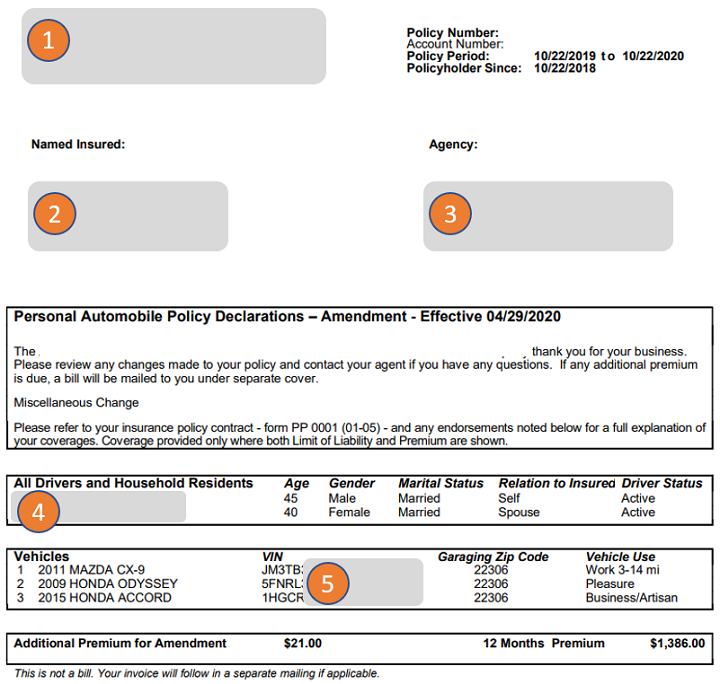Home Insurance Vehicle Insurance Smart Savings & Coverage
Navigating the world of insurance can feel like traversing a minefield. Home and vehicle insurance, often considered separately, present significant opportunities for cost savings and comprehensive protection when strategically bundled. This exploration delves into the intricacies of combining these crucial policies, revealing how smart choices can safeguard your assets and your financial well-being. From understanding the nuances of coverage differences and the factors influencing premiums to mastering the claims process and selecting the right provider, this guide provides a clear path toward securing optimal insurance solutions. We’ll examine bundled packages, compare coverage types, and explore strategies to maximize discounts and minimize costs, empowering you to make informed decisions about protecting your most valuable possessions. Bundled Insurance Packages Bundling home and auto insurance is a popular strategy for many homeowners, offering potential cost savings and streamlined management of insurance needs. This approach combines both policies under a single provider, often resulting in a more convenient and potentially more affordable insurance solution compared to purchasing separate policies from different companies. This section explores the advantages and disadvantages of bundled insurance, providing a comparative analysis to help you make an informed decision. Purchasing bundled home and auto insurance offers several key advantages. The most significant benefit is often a reduction in overall premiums. Insurance companies frequently offer discounts for bundling policies, recognizing the reduced risk associated with insuring multiple assets from a single customer. This is because the insurer minimizes administrative costs and reduces the likelihood of a customer switching providers for either their home or auto insurance. Beyond cost savings, bundling simplifies policy management. Dealing with a single provider for both your home and auto insurance streamlines communication, claims processing, and payment procedures. This can save significant time and effort, particularly during stressful situations like filing a claim after an accident or a home emergency. Comparison of Bundled and Separate Insurance Policies Bundled home and auto insurance policies offer a distinct advantage over purchasing separate policies from different insurers. While separate policies allow for greater flexibility in choosing individual coverage options and providers, bundling often leads to significant cost savings. The convenience of managing both policies through a single provider simplifies administration and claim processes. However, the lack of flexibility in choosing different providers for home and auto insurance could be a drawback for some consumers who prioritize finding the best coverage options at the most competitive prices from different providers. A comprehensive cost-benefit analysis considering individual needs and preferences is crucial before making a decision. Cost Savings with Bundled Insurance The potential for cost savings is a primary driver for many consumers choosing bundled insurance packages. Insurance companies often offer discounts ranging from 5% to 25% or more on bundled policies, depending on the provider, coverage levels, and risk profile of the insured. These discounts represent significant savings over the long term, particularly for those with higher premiums for either their home or auto insurance. For example, a homeowner paying $1,200 annually for home insurance and $800 annually for auto insurance might save $200 or more by bundling, depending on the discount offered by the insurer. The exact savings will vary based on individual circumstances, so it is always advisable to obtain quotes from multiple insurers to compare prices. Sample Bundled Insurance Packages The following table compares three different bundled home and auto insurance packages from different providers, illustrating the variations in coverage and pricing. Note that these are example packages and actual prices will vary based on location, coverage levels, and individual risk profiles. It is crucial to obtain personalized quotes from each provider before making a decision. Provider Home Insurance Coverage Auto Insurance Coverage Annual Premium Insurer A $250,000 dwelling coverage, $100,000 liability $100,000 liability, $500 deductible $1,800 Insurer B $300,000 dwelling coverage, $150,000 liability $100,000 liability, $250 deductible $2,100 Insurer C $200,000 dwelling coverage, $75,000 liability $50,000 liability, $500 deductible $1,500 Coverage Comparison Understanding the nuances between home and vehicle insurance is crucial for comprehensive financial protection. Both safeguard against significant losses, but their coverage areas differ considerably, reflecting the unique risks associated with each. This section details these key distinctions, clarifying what each policy protects and what it excludes.Home and vehicle insurance policies, while both forms of property insurance, diverge significantly in their coverage scope. Home insurance primarily focuses on protecting your dwelling and its contents, along with providing liability protection for accidents occurring on your property. Conversely, vehicle insurance concentrates on protecting your vehicle from damage or theft, and offering liability coverage for accidents involving your car. This fundamental difference shapes the specific risks each policy addresses. Liability Coverage Differences Liability coverage is a cornerstone of both home and auto insurance. In home insurance, it covers legal expenses and potential settlements if someone is injured on your property or if you are legally responsible for damage to someone else’s property. For example, if a guest slips and falls on your icy porch, your liability coverage would help pay for their medical bills and any legal fees. Vehicle insurance liability coverage protects you financially if you cause an accident that injures someone or damages their property. This could involve paying for medical expenses, vehicle repairs, or legal costs resulting from a car accident you caused. The limits of liability coverage vary greatly depending on the policy and state regulations. Higher limits offer greater protection, but come with a higher premium. Property Damage and Personal Injury Coverage Home insurance’s property damage coverage protects the structure of your home and its contents against various perils such as fire, theft, and vandalism. This extends to detached structures like garages or sheds. Personal injury coverage within a homeowner’s policy can cover medical bills and legal fees if someone is injured on your property. Vehicle insurance, on the other hand, primarily covers damage to your vehicle itself, whether from accidents, theft, or natural disasters (depending on the policy). Comprehensive coverage often includes damage caused by events outside of collisions, such as hail or vandalism. Collision coverage specifically addresses damage resulting from accidents. Personal injury protection (PIP) in vehicle insurance covers medical expenses for you and your passengers, regardless of fault. Uninsured/underinsured motorist coverage protects you if you’re involved in an accident with a driver who lacks sufficient insurance. Typical Exclusions in Home and Vehicle Insurance Policies It’s crucial to understand what is typicallynot* covered by either policy. This is often detailed in the policy’s exclusions section.Understanding the exclusions is vital to avoid unexpected financial burdens. Home Insurance Exclusions: Generally, home insurance policies exclude damage caused by floods, earthquakes, and acts of war. Specific exclusions can vary widely, so it is important to review the policy carefully. Intentional damage caused by the homeowner is also usually excluded. Wear and tear, normal maintenance, and gradual deterioration are typically not covered. Vehicle Insurance Exclusions: Common exclusions in vehicle insurance policies include damage caused by wear and tear, improper maintenance, or using the vehicle for unauthorized purposes (e.g., racing). Damage caused by driving under the influence of alcohol or drugs is typically excluded. Certain types of modifications to your vehicle might also not be covered. Factors Affecting Insurance Premiums Understanding the factors that influence your home and vehicle insurance premiums is crucial for securing the best possible coverage at a competitive price. Numerous variables contribute to the final cost, and being aware of these can help you make informed decisions to potentially lower your premiums. This section details key factors impacting both home and auto insurance costs. Location’s Influence on Premiums Your geographic location significantly impacts both home and auto insurance premiums. High-crime areas generally result in higher premiums due to increased risk of theft, vandalism, and liability claims. Similarly, areas prone to natural disasters like hurricanes, earthquakes, or wildfires will command higher premiums to reflect the elevated risk of damage. For example, a home located in a coastal region susceptible to hurricanes will likely have a higher insurance premium than a similar home located inland. Likewise, an individual living in a city with a high rate of car accidents will face higher auto insurance premiums compared to someone in a rural area with fewer accidents. Insurance companies use sophisticated risk assessment models that incorporate local crime statistics, weather patterns, and accident data to determine premiums. Credit Score’s Impact on Insurance Costs Surprisingly, your credit score can significantly affect your insurance premiums, particularly for auto insurance. Insurance companies often view a low credit score as an indicator of higher risk. The rationale is that individuals with poor credit history may be less likely to manage their finances responsibly, potentially leading to higher claims or a greater chance of non-payment. While the exact relationship varies by state and insurer, a higher credit score typically translates to lower premiums. For instance, an individual with an excellent credit score might receive a significant discount compared to someone with a poor credit score, even if their driving history is identical. This correlation is based on statistical analysis of vast datasets showing a link between creditworthiness and insurance claims behavior. Driving History and its Effect on Auto Insurance Driving history is a paramount factor in determining auto insurance premiums. Accidents, traffic violations, and even the type of vehicle driven all contribute to the assessed risk. A clean driving record with no accidents or tickets results in lower premiums. Conversely, multiple accidents or serious traffic violations, such as driving under the influence (DUI), will significantly increase premiums. For example, a DUI conviction can lead to a substantial increase in premiums, sometimes lasting for several years. Similarly, multiple at-fault accidents can result in significantly higher premiums than a single minor accident. Insurance companies use points systems to quantify the severity of driving infractions, directly impacting the premium calculation. … Read more




